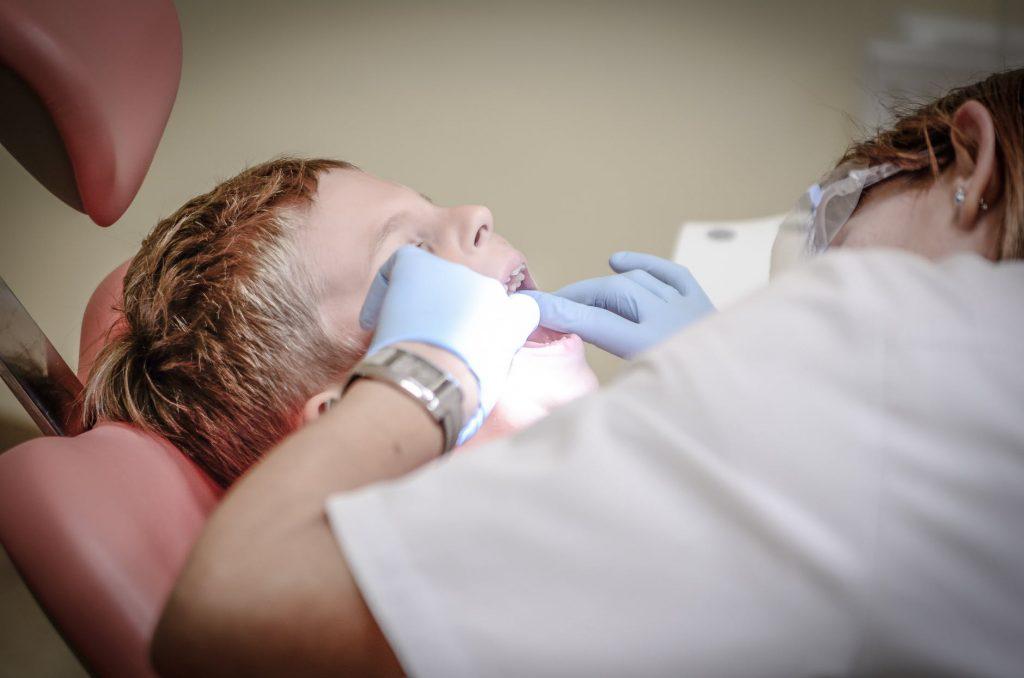
Visiting your dentist for routine checkups and dental procedures are a norm these days and essential for your oral hygiene. During these visits, it is common for dentists to request you for a dental x-ray. While these x-rays are vital to accurately obtain an image of the dental issues that you face, there are some limitations to these two-dimensional x-rays. However, with technological advancement, dentists are now able to obtain complete imaging of your oral cavity using a technology known as dental computed tomography (CT) or dental cone-beam computed tomography (CBCT). A dental CT is a device that specifically scans your teeth and surrounding tissues in a non-invasive manner to provide a complete assessment of your dental condition to the dentist before any dental procedure. Let us see the top 6 benefits of this advanced scanning technology below.
- Better Imaging than X-Rays:
A dental X-Ray only provides a two-dimensional panoramic image of the teeth. X-rays can show the contour and height of the jaw bone, but they do not indicate the bone width and density. The images can produce distortion in the location of the alveolar nerve. A dental CT rotates to take X-ray images from different angles. A computer then collates these images together to form detailed three-dimensional pictures of soft tissues, gums, teeth, and nerve pathways. Also, the rotating cone-shaped radiation beam of a dental CT allows images at various oblique slices to get intricate details of the entire jaw area. Therefore, dental CT helps to look at teeth and surrounding soft tissues at the same time, which was not possible earlier with x-rays. As a result, dentists can get rid of the guesswork and can get the exact location of the alveolar nerve and avoid painful nerve damage during dental procedures. All this information helps dental surgeons to plan and carry out various procedures.
2. Helps in Dental Implants:
One of the most significant benefits of dental CT imaging is for dental implant patients. With three dimensional imaging, a dental surgeon becomes aware of the amount of bone a patient has, bone density, the proximity of the alveolar nerve, and the exact orientation to place the implant. Dental CT provides important measurements required prior to dental implant surgery, namely the anatomy of the patient’s mouth, the width and density of the jawbone ridge, and assessing the feasibility of the implant. With the help of this safe diagnostic imaging technique, the dentist can produce vivid spatial views of the mouth that allow the surgeon to decide whether the patient is a good implant candidate. A study shows that employment of CBCT has brought a reduction in dental implant failure rates. Dental CT also helps in the postsurgical assessment of bone grafts and the position of the dental implants.
3. Planning for other advanced Dental Procedures:
Apart from implant issues, dental CT can help dentists prepare and plan for several other advanced procedures. One such application area is wisdom tooth extraction. Dental CT helps visualize nerve location before wisdom tooth extraction. A study, conducted on 40 patients with impacted mandibular third molar (wisdom tooth) extraction issues, suggests that dental CT reduced the risk of inferior alveolar nerve (IAN) injury during wisdom tooth extraction compared to traditional x-ray imaging. As a result, surgeons can undertake alternative safe tooth extraction approach.
Dental CT can aid in the planning for root canals and bone grafts. As per the study, CBCT can provide more accurate root canal shape information and accurate medial line identification. Dentists can plan better for root canal treatment using this information. Dental CT provides a comprehensive 3D image of the teeth, thus enabling planning of cosmetic dentistry and reconstructive procedures like inlays, onlays, crowns, and veneers.
4. Improved Diagnostic Ability:
Using dental CT, your dentist can diagnose several dental and oral cavity area issues by looking at soft tissue, nasal cavity, and bones from a variety of angles and views of your mouth. Dentists can diagnose abnormal lesions that can indicate serious cancerous growth, i.e., tumors, bone cancers, and cysts. Snoring or Sleep Apnea can be an indicator of cardiovascular disease and diabetes. Using dental CT, your dentist can know the exact shape and size of the jaw bone, which can help diagnose and treat sleep apnea issues. Additionally, dental CT also helps identify any sinus and nasal cavity issues. Dental CT can determine tooth orientation and diagnose any underlying infection in the teeth.
5. Low Radiation:
Unlike x-rays and conventional CT scans, CBCTs or dental CTs emit lesser dose of radiation. Therefore, they are considered safer to use for child dental patients. The cone-shaped beam of a dental CT focusses the radiation to a small area of interest. It does not allow scattering of radiation, and hence, after your scan, the radiation does not remain in your body. As compared to conventional CT and x-ray, dental CT does not have any significant radiation side-effects and is a safe diagnostic tool.
6. Quick, Compact, and Precise:
Compared to a conventional CT, a dental CT is fast. The actual full mouth scan takes only 20 seconds. The computer takes about seven minutes to process the scanned images and collate them into a three-dimensional output. The overall dental exam takes 15 minutes, typically. The radiologist or technician performing your scan will be nearby and can talk and guide you during the scan.
In contrast with bulky x-ray machines, a dental CT or CBCT machine is small and compact. The typical height of a CBCT machine is 7 feet with a weight of 400 lbs only. This makes it quite handy to move and operate within a dentist’s clinic. Also, it occupies very little space within a dentist’s clinic. Apart from its speed and compactness, dental CT’s main USP is the precision of images that it provides which makes it an ideal choice to plan cosmetic dentistry, i.e., laying inlays, crowns, onlays, etc.
Conclusion:
The above pointers indicate that dental CT has numerous benefits, and its detailed and precise scanning reduces the dependence of dentists on guesswork which will benefit both patient and dentist. Apart from direct clinical applications, dental CT has applications in research areas for both dentists and dental education institutions. Even patients can get a good understanding of their oral hygiene and dental health issues by looking at 3D images. There is, therefore, a vast scope for further applications and definitely, dental CT will continue playing a significant role in diagnosis and image guidance for dental procedures.
Check out here all other health blog here
